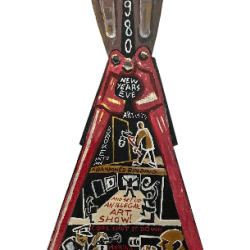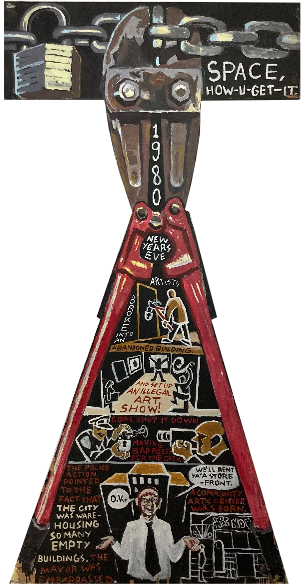July — Radical Community Part 4 of 4: Local Media Production & Conclusion

by John C. Harris
July 18 2021
Some radical spaces within the neighborhood are committed to grassroots style cultural production with the goal of improving the community, yet many of their relationships with the government of the City of New York remain contentious. The legal and operating statuses of these groups have evolved over the years. Some squats are now Co-Ops, in which the residents own the space collectively, while others are undergoing remodeling, and many of them were evicted. One of those evicted institutions was Charas El Bohio. In Ours to Lose, Starecheski traces this community center back to the Real Great Society, a collective of Puerto Rican activists in the 1970s, who after squatting the Christodora House with the Black Panthers Charas went on to occupy the abandoned P.S. 64 in 1979. For over twenty years, until December 2001, the group contributed to the cultural landscape by, as David Graeber details in his Direct Action: An Ethnography, also available at MoRUS, by providing a space to create for artists and craftspeople in exchange for helping rehabilitate the structure; a notion of sweat equity which is a core concept in the squatting community that helps strengthen their case for ownership of a previously abandoned building.
Similarl to El Boho, but with a slightly different focus, ABC No Rio was an art squat. In his forward to ABC No Rio Dinero: The Story of a Lower East Side Art Gallery, held within the library at MoRUS, Leonard Abrams considered it the “most artist-run” public project of its time. In that same statement he reveals the genesis of this community art space as the 1980 Real Estate Show in which “A group of artists decided on a modest but by our society’s standards radical course of action: to break into an empty city owned building [123 Delancey Street] and put on a show that examined and challenged commonly held assumptions about ownership, property and the way we treat each other as people.” Today, ABC No Rio maintains a commitment to oppositional culture, and promotes resources and ideas which impact society, culture, and community by collaborating with various art and community spaces including a Zine Library zine housed at the Clemente Center 107 Suffolk St. Their influence on the contemporary community run media production spaces of the neighborhood is immediately clear.

(SPACE, HOW-U-GET-IT. by Seth Tobocman on loan from ABC No Rio)
Despite these losses to our community there are more groups contributing to the radical solution of cultural production. To echo Noam Chomsky, in an age in which mass media manufactures mass consent with the status quo, locally produced media addressing local issues produces thoughtful dissent to the state of things and combats the corporate owned media landscape. Our archival collection includes premier examples of these underground, grassroots publications ranging from 1960s issues of the Rat Subterranean News to more complete runs of Lower East Side publications like East Villager, and the Shadow. But as newspaper readership dwindles, other forms of media are readily taking their place. 8 Ball Community, at 59 E. 4th Street, while not a squat is undoubtedly inspired by the actions of groups like Charas El Bohio and ABC No Rio. It is a participant governed collective, with a mission to generate collaborative and educational exchange through public access television, and radio stations, a self-publishing fair, and public library.
The history of these spaces, as well as the history of the groups that operate them, are critical to understanding the history of radical activity within the Lower East Side. Their histories reveal how a community can take control of the solutions to its most critical issues including housing scarcity resulting from exploitative development, food scarcity and crumbling infrastructure, and media narratives projected onto a community within the 20th century and into the present day. This network continues to shape the next generation of radical thinkers, activists, and community members. It is without question that by choosing certain radical spaces to examine we are inherently excluding many, many more spaces from the scope of our posts here but we encourage you to come to MoRUS and experience our exhibits and collections or to engage in your own research by exploring the archival content on our Collective Access which will soon to be made available through the website online.
